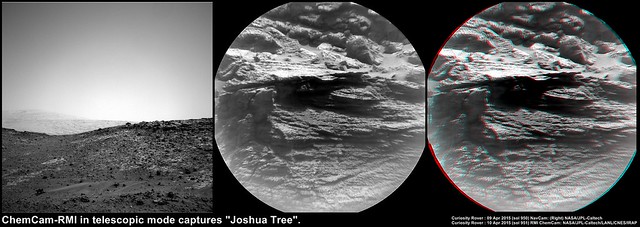QUOTE (Arizona Dave @ Apr 9 2015, 12:48 PM)

a) Being near the bottom of Gale crate, rather than the top, where did the KM's of rock and overburden erode to? Erosion goes downhill, there isnt anywhere for KM's to have eroded to, The crater prevents excavation of sediment outside of the rim (thus all erosion remains inside the crater) - and
Deposition can go uphill. It's entirely possible that lower altitudes erode more because of thicker atmosphere, and the dust ends up at higher altitudes because the atmosphere cannot keep it afloat any more and the atmosphere cannot erode as effectively at altitude. Or the erosion at low altitudes puts dust into the air that ends up entrained in ice somewhere else. Larger grains are probably all local, but once they reach a size that they can be distributed via dust storms, they end up globally distributed.
QUOTE (Arizona Dave @ Apr 9 2015, 02:19 PM)

a) Not all overburden is "dust/sand" at least 50% of overburden would be hard rock and thus at least 50% of that overburden could not be moved by wind, thus it cannot be located outside of the crated, rocks dont roll uphill.
d) at 1% of the earth's atmosphere, 100mph winds on mars would exert the force of a 1mph wind on earth...living in AZ for 20 years, dust storms simply dont happen in winds under 30-40 mph, and we certainly dont get 1mm of dust/sand per year removed or deposited in AZ...The dust in Mar's atmosphere is very fine dust, due to the lack of air compared to earth, so what mechanism not only eroded, but excavated all that material to Only Outside the crater?
Where is the 50% rock/dust number coming from?
I think the dryness on Mars allows for much finer dust - Az is a wet tropical paradise compared to the amount of water in the air on Mars. Also, moisture on Earth limits the minimum size of dust before it starts sticking together and falling out of the sky. The extreme dryness of Mars' atmosphere prevents small dust particles from cementing together.
http://en.wikipedia.org/wiki/Martian_soil#Atmospheric_dust"Hard rock" I would guess is only true for the source basalts - once they have eroded into dust, and turned into sedimentary layers, I expect they are much softer than corresponding rock on Earth, due to lower gravity not compressing them as much and generally not as much water to cement grains together.
Topology of the crater could have influenced how the material interior hardened and was eroded away. It could affect where and how much water percolated upwards through the cracks generated by the impact, the size distribution of the dust depositions due to the initial crater walls and original central peak, and how wind erosion swirled around the crater. With the higher southern wall, it seems to me that winds blowing north would swirl over the wall, and erode the interior to the south of the central peak pretty effectively. I don't know if that's a prevailing direction of wind over the last 1Gy, but it would help explain why it looks that way.
Don't forget our view of Mars is a small snapshot in time of a very dynamic climatic system - with the huge axial tilt variability allowing for "permanent" ice caps at the equator. Lecture 1.20 gives an overview of what to expect over the range of axial tilts on Mars:
https://class.coursera.org/solarsystem-002/lectureHaving large ice caps at the equator probably causes some pretty intense & strange winds.




